Archlute music from the Doni manuscript
Luca Tarantino
64:38
CGS 003
Click HERE to buy this download on amazon.co.uk

Archlute music from the Doni manuscript
Luca Tarantino
64:38
CGS 003
Click HERE to buy this download on amazon.co.uk
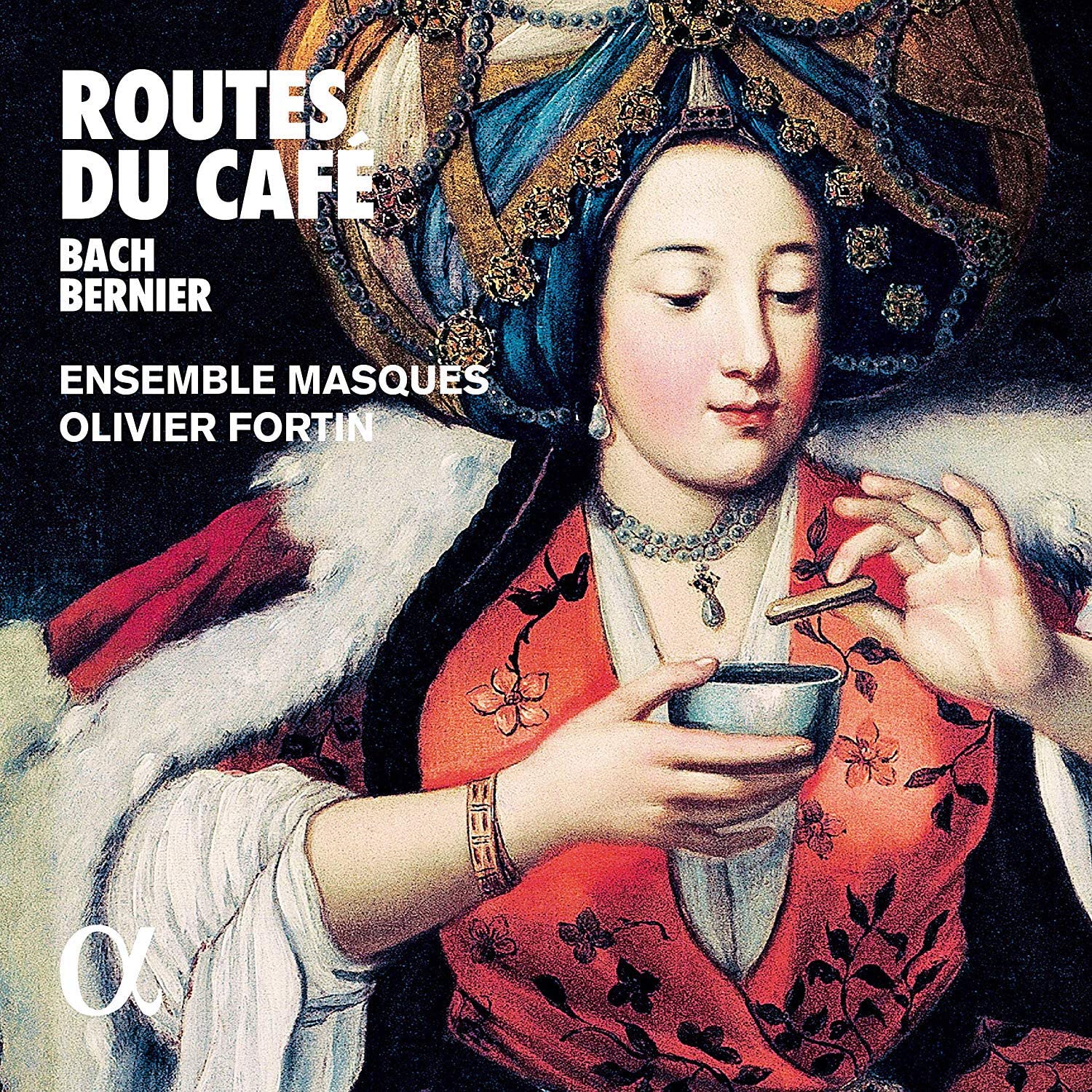
Ensemble Masques, Olivier Fortin
71:39
Alpha Classics Alpha 543
Music by Bach, Bernier, Locke, Marais & Nâyi Osman Dede (+Tanburi Cemil Bey & Kathleen Kajioka)
Click HERE to buy this CD on amazon.co.uk
This clever CD charts the spread of coffee through Europe, starting with the original cafés in Turkey and then finding music associated with its arrival in France, England and Germany. The famous coffee cantata by Bach finds an equally witty contemporary French counterpart in the cantata Le Caffe by Nicolas Bernier, while France is also represented by the viol piece Saille du caffé by Marin Marais. In London Matthew Locke’s Consort of Fower Parts, we have the sort of music he and Pepys might well have played together when they met in the Turk’s Head coffee house around 1660. The rest of the music is Turkish traditional music played either by a Turkish instrument ensemble or by Kathleen Kajioka on the violin to the accompaniment of Turkish percussion. The Bernier with its obbligato flute part is charming, while the Bach, also with obbligato flute, is very effectively dramatised by the three singers. Soprano Hana Blažíková sounds a little taken by surprise by some of the more eccentric musical phrases in the Bernier and doesn’t sound entirely comfortable in the higher passages in the Bach, but the two men help to keep things on the rails. The mixing of Baroque music and the traditional music of the east doesn’t always work, but here I feel it does so very well. In particular, Kathleen Kajioka’s violin Taksim and Wahda sound very much like the sot of music that might have been played in the cosmopolitan London coffee houses of yore!
D. James Ross
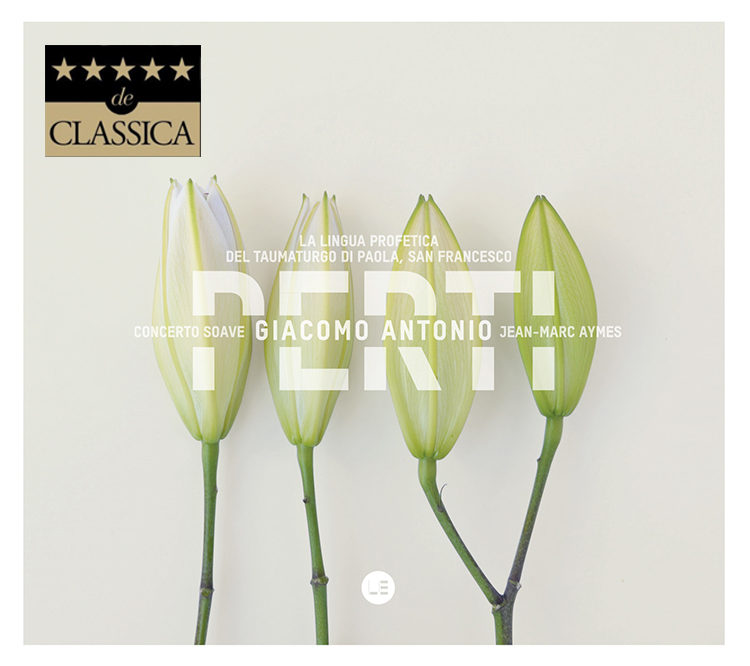
Maria Cristina Kiehr Anne de Bretagne, Lucile Richardot Louise d’Angoulème, Valerio Contaldo Charles VIII, Stephan MacLeod St Francis de Paola, Concerto Soave, Jean-Marc Aymes
75:30
Lanvellec Editions LE00002
Click HERE to buy this CD on the publisher’s website
Such is the embarrassing abundance of gifted Italian composers in the 17th and 18th centuries that the likes of Giacomo Antonio Perti, a composer of operas and oratorios, could be completely forgotten until virtually our own times. Boasting probably the longest career in the history of music, he began composing in 1678 at the age of 17 and was still composing when he died in 1756 at the age of 95! The musicologist Franco Lora has been able to ascribe this anonymous and rather curious oratorio to Perti on the basis of circumstances, style and sheer quality. Three of the four vocal parts are French Royals and the fourth is St Francis, and the music is democratically divided between all four with each receiving the same number of recitatives and arias. Surprisingly each half concludes with a duet, seemingly a convention which allowed the audience to prepare their exit! The piece demonstrates Perti’s inventive sense of melody and skill with his voices and orchestral forces. For me, the highlight of the casting is the presence of alto Lucile Richardot, whose lovely full contralto voice and innate musicality I noticed immediately before consulting the cast list. Unfortunately, the singing is not uniformly of this superlative standard – the two men are fine, but soprano Maria Cristina Kiehr sounds a little uninspired and vocally lazy by comparison. Perti’s reputation is slowly returning in the light of performances of his work, and if this piece is by him, it further enhances the reputation of a man much admired as a composer and teacher in his own very long lifetime. A star pupil of Celano, in turn the star pupil of Carissimi and in turn the teacher of Torelli and Padre Martini, he occupies a pivotal position in the development of Italian music, and like Clementi a century later, his sheer longevity and constantly evolving style ensured that he was extensively influential.
D. James Ross

Amaya Fernández Pozuelo harpsichord
67:28
Stradivarius STR 37140
+ de Albéniz, de Albero, López, Soler
Click HERE to buy this on amazon.co.uk
This is an impressive recording of keyboard sonatas by Domenico Scarlatti and four of his Spanish followers: Antonio Soler, Sebastián de Albero, Felix Máximo López and Mateo Pérez de Albéniz. The last three were new to me, though I did recognise what is the sole surviving sonata by Pérez de Albéniz. López’s variations on a ‘Minué afandangado’ are an entertaining fusion of French and Spanish dances, played here with panache. De Albero’s Sonata no. 12 is very much in Scarlattian mode. Fernández Pozuelo is a persuasive advocate for her ‘alio modo’ of performing this repertory: it involves considerable flexibility in tempo, lots of added ornamentation and variation in phrasing, as well as more than unusual asynchrony between the hands. This allows her to explore the rhetorical possibilities of the music successfully and to provide a greater level of contrast than is customarily found in performances of this repertory. This is particularly the case in her fine performance of the extended D minor Scarlatti Sonata K213. Other pieces show bravura and a real joy in the music. Her interpretations are helped considerably by some fine recording engineering, which gives her copy of a Hemsch harpsichord by Fernando Granziera of Milan real presence, highlighting the richness of its sound. My only disappointment is with the booklet, where some informative notes on the composers and the music are printed only in Italian and not translated into other languages. There are translations of some summary notes and a lengthy rumination on the instrument used, but these are not so useful and the English translator struggles to convey the rather flowery sentiments of the original Italian. However, the recording itself is highly recommended.
Noel O’Regan

Colin Booth harpsichord
147:34 (2 CDs)
Soundboard Records SBCD 219
David Stancliffe gave a warm welcome on this site to Colin Booth’s recording of WTC Book I when it appeared nearly two years ago and I am happy to confirm that his follow-up recording of Book II is equally fine. Booth uses the same harpsichord (his own copy of a double-manual Nicholas Cellini instrument of 1661) and tuning system (Kirnberger III) as before, and the recording displays the same clarity in the part-writing in what is a warm and chamber-like acoustic. This harpsichord is particularly good at projecting all the lines in dense contrapuntal textures and Booth uses this very effectively. He eschews virtuosity for its own sake, and these are generally straightforward accounts, falling somewhere between the recent recordings by John Butt and Richard Egarr as regards tempo and reflectiveness. Booth adds many judicious ornaments while never letting them interfere with the line. I particularly like his rhythmical flexibility in the preludes which allows him to negotiate some of the trickier notational corners with ease, as in both F sharp preludes. His astute ‘swinging’ of the beat here and elsewhere produces convincing results. In contrast, the fugues can seem a bit rigid at times, particularly those in the more old-fashioned style, though the more modern ones certainly bounce along nicely. There is a very comprehensive set of liner notes with information about the instrument and the rationale behind Booth’s choice of tuning system, in the light of Bach’s understanding of the term ‘well-tempered’. There are also some perceptive notes on the musical qualities of the second book. Overall, this is an excellent and very welcome recording which showcases Booth’s thoughtful interpretations, and much will be learnt from a careful listening to it.
Noel O’Regan

Simonetta Heger
62:36
Dynamic CDS7841
Click HERE to buy this on amazon.co.uk
Sammartini was a prolific composer, known primarily for his symphonies and operas which helped nudge music toward the Classical style. His considerable chamber output includes nearly forty solo keyboard sonatas which have hitherto been rather neglected. Those recorded on this CD are found in manuscript sources covering much of the composer’s life and mirror his stylistic developments from the 1720s up to the 1760s. They have just one movement and generally follow the same form as Domenico Scarlatti’s sonatas, with two sections, two or more themes, and a certain amount of development before a loose recapitulation. Almost all are in major keys and there is a certain sameness about Sammartini’s use of figuration, but there is some considerable variety in the music presented here. Heger plays on a copy of a 1720 Christian Vater instrument built by Carlo Mascheroni which is closely recorded in a chamber-type acoustic and well suited to the music. She is a sympathetic, if somewhat safe, interpreter: I would have welcomed some more flamboyance and excitement in the playing. Tempi are solid but the momentum does slip now and then. That said, it is good to have these works available and it makes a useful collection to dip into and to compare with other keyboard music from these decades.
Noel O’Regan
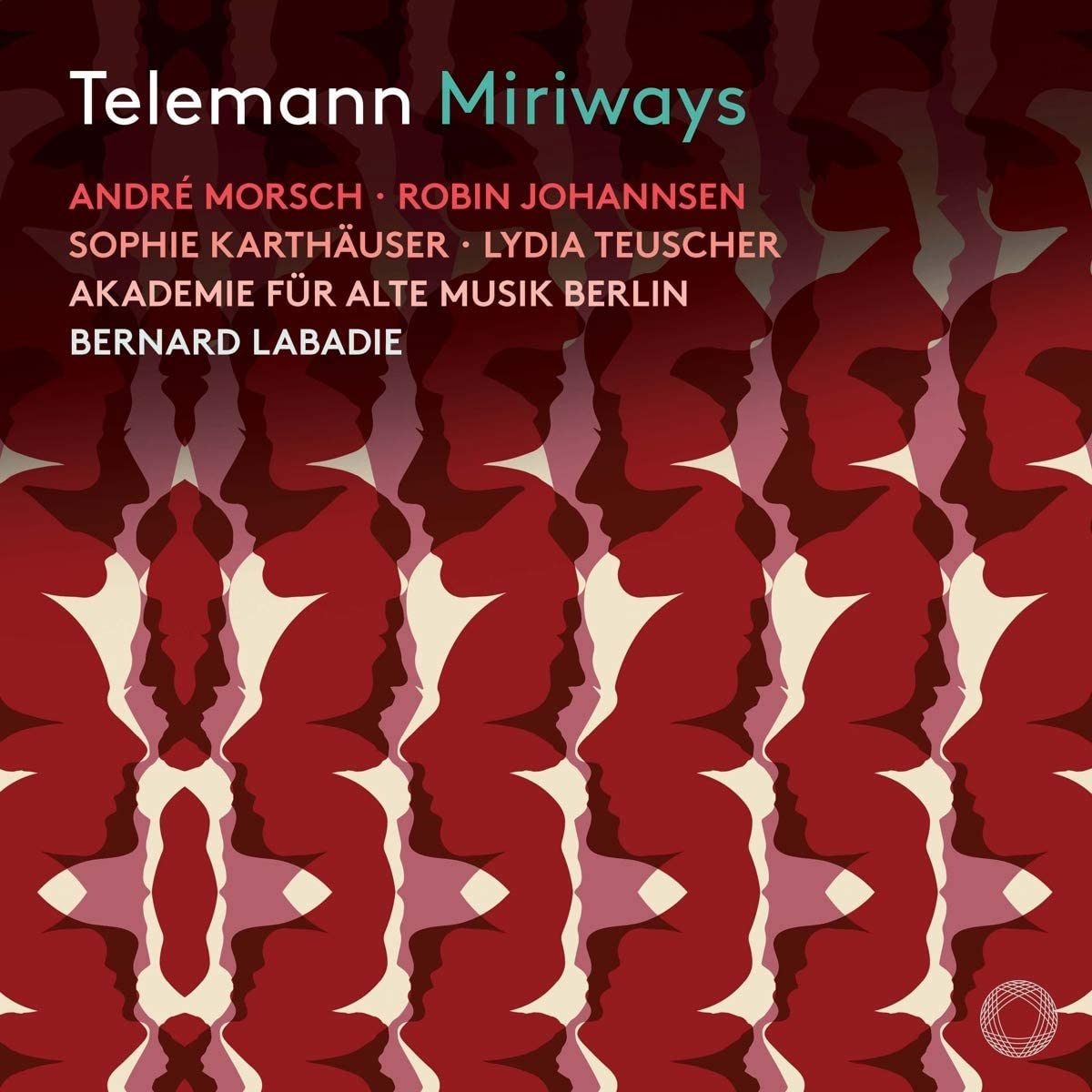
André Morsch Miriways, Robin Johanssen Sophi, Sophie Karthäuser Bemira, Lydia Teuscher Nisibis, [Michael Nagy Murzah, Marie-Claude Chappuis Samischa, Anner Fritsch Zemir, Dominik Köninger Geist/Scandor, Paul McNamara Gesandter,] Academie für Alte Musik Berlin, Bernard Labadie
150:23 (2 CDs)
Pentatone PTC 5186 842
Click HERE to buy this from amazon.co.uk
There has been some serious attention given to this splendidy exotic baroque opera from the lively Hamburg stage, which premiered on the 26th May 1728, that was six years after Telemann took full control of the Gänsemarkt Opera house, and ten years before it finally failed to draw in the crowds and faltered to a close in 1738. This places this remarkable gem of a libretto by Johann Samuel Mueller, later to become principal of Hamburg’s famous Johanneum school, in the years of the opera’s artistic ascendancy. As the historical background goes, “Miriways” or more correctly Mir Wais, an Afghan tribal warlord (or possibly his son) was the instigator of several uprisings, setting in motion the liberation of Kandahar province from Persian rule circa 1700. Now place the main character within this historic frame but add his missing daughter, Sophi, who loves the deposed Shah’s son, who Miriways guides to pick a wife, and he falls (luckily!) for Bemira the reputed daughter of Nisibis, a beautiful woman fled from Ispaphan, who attracts the attention of a tartar* and Persian prince (Zemir) and now we have several love interests and episodes of misplaced, thwarted and unrequited love(s) swaying and sighing through the plot.
There are some really quite exquisitely well-observed arias from the main love-entangled protagonists and even some excellent martial ones for Miriways himself: Ein doppler Kranz (Track 7) is a striking example. The opening ouverture with prominent horns sets out in fine form with an animated majestic tone; in fact, the horns come to the fore on several notable occasions, giving at times hints of exotic foreign tones, but also marking intense emotions of the main “dramatis personae” bearing their souls. Telemann deftly deploys the rich array of instrumentation to marvellous effect, from the delightful dulcet sleep scene from Nisibis (Track 13) and the pleasant rising wind for *Murzah’s aria (Track 15), also the incredibly vivid outbreak of fire in Act 3 scene 6, after the simply wonderful drinking Aria from Scandor, a servant of Samisha, Miriways’ secret wife, mother of Bemira (here followed by an outbreak of spontaneous applause!) all illustrating the clever contrasts and tremendously well-contoured dramatisation of the piece.
This very fine live recording by NDR in 2017 has a few differences to the 2014 CPO recording (777 752-2) by Michi Gaigg and L’Orfeo Barockorchester, which itself has some instrumental insertions from TWV50:4, and is a very noteworthy, clean and tidy version with many admirable qualities; this said, hand on heart, the nimble, alert Akamus Live version here, seems to shine and shimmer with that added “something” that draws you along, right through the love-entanglements, right up to the hopeful (anticipated) “happy end”/ final denouement.
Amid the quivering, fluttering pairs of flutes, and oboes/oboi d’amore, it is probably the strident pair of horns which leave a lasting impression. To think that this was but one of at least three operas Telemann produced in 1728! Only one other has survived and it still awaits resuscitation from dusty slumber and neglect…
David Bellinger
The 42-Page CD booklet explains the full background to the opera, and the love entanglements (pp. 20-21)
For information: The first concert performance in modern times was given in 1992, during the 11th Telemann Festival in Magdeburg, with Musica Antiqua Köln under Reinhard Goebel. It featured a few extra arias, including one in Italian! This might possibly have been inserted when the opera was reprised in 1730 or maybe an earlier undocumented performance.
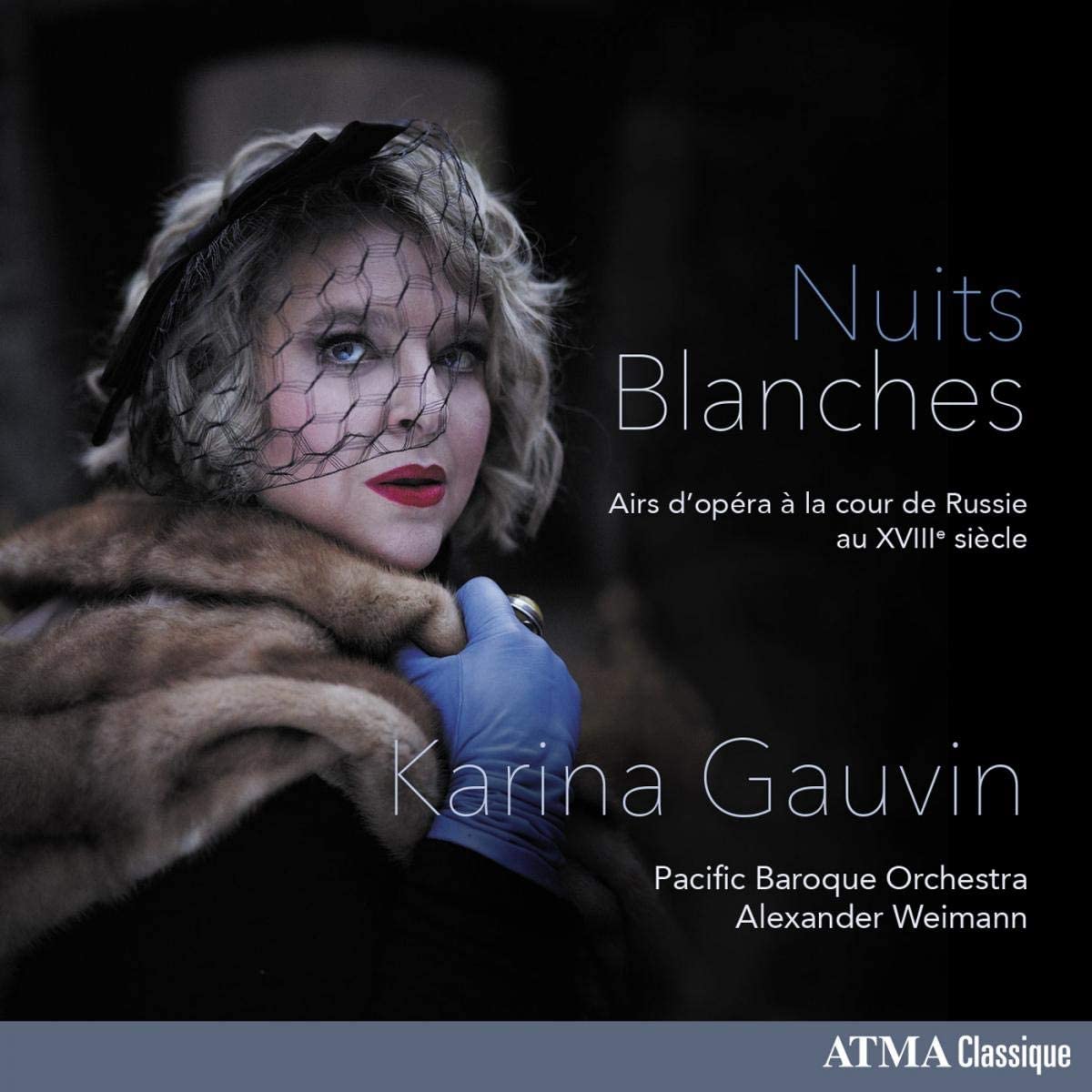
Airs d’opéra à la cour de Russie au XVIIIe siècle
Karina Gauvin, Pacific Baroque Orchestra, Alexander Weimann
TT? ca. 58:00?
Atma Classique ACD2 2791
Click HERE to buy this on amazon.co.uk
Although subtitled (in French) ‘Arias from the 18th-century Russian court’, the CD under consideration, in fact, includes little with a direct connection to the court, in contrast to Cecilia Bartoli’s ‘St Petersburg’ (Decca). That included music by Francesco Araia (1709-c.1770), who can be considered the father of opera in Russia, and Hermann Raupach (1728-1778), the father of Russian language opera. Neither feature on the present not-so-generously-filled disc, the greater part of which is devoted to extracts of operas first given in Italy by the Ukrainian-born composers, Maxime Berezovski (1745-1777) and Dimitri Bortnianski (1751-1825), and Gluck, extracts from whose Armide are included for the tenuous reason that Berlioz introduced it to Russia, long after the death of its composer.
Berezovski’s credentials as an ‘Italian’ opera composer are impeccable. In 1766 he was sent at the expense of the Russian court to Bologna study under Mozart’s mentor, Padre Martini, being awarded the diploma of the famed Accademia Filarmonica. His Italian sojourn concluded with a successful production of his opera Demofoonte in Livorno in Carnival 1773. Today only four arias survive, two of which are performed here by Canadian soprano Karina Gauvin. Particularly impressive is ‘Misero pargoletto’, sung by the Thracian prince Timante as he reflects on a letter that appears to prove that his young son was unsuspectingly born of an incestuous relationship (he wasn’t, of course). Set in contrasting moods of reflective horror and dramatic exclamation, the aria makes interesting use of da capo form.
That the name of Bortnianski is rather better known is accounted for by his splendid a cappella church music, mostly composed during the period of his tenure as director of the imperial chapel choir. Prior to that, his career followed a similar trajectory to that of Berezovski. In 1769 he followed his compatriot to Italy, where he may have studied with Galuppi, who had only recently himself returned from a highly successful period in St Petersburg. While in Italy Bortnianski composed three drammi per musica, of which three extracts from Alcide (Venice, 1778) are given here. The first is an aria in which the young Alcide (Hercules) having been led to a crossroads at which he must choose between the difficult, rocky route of virtue and the easy track of pleasure is torn between the two, the aria effectively dramatising the conflict, a long accompanied recitative that brings more agonising over the choice that must be made. Finally comes a gracious lyrical andante in which Hercules expresses his thanks to the gods for guiding him on the right path, which is of course virtue. The story will be familiar to many readers from settings by Bach and Handel. All three extracts, pleasing if not especially memorable, testify to a thorough assimilation of the Neapolitan style then dominating European music. Le faucon is a later work, one of three opéras comiques composed for Crown Prince Paul, into whose service Bortnianski entered after his return from Italy. Despite the genre and language, the gracefully flowing and felicitously orchestrated through-composed aria ‘Ne me parlez point’ remains thoroughly Italianate in style. The brief orchestral pieces by Domenico Dall’Oglio and Fomine are unremarkable.
All this music is very well sung by Karina Gauvin, whose lustrous full-bodied soprano here seems in better shape than when I last heard her live. She is particularly suited to the role of Gluck’s Armide, the extracts including the big scenas ‘Enfin, il est en mon puissance’ and the end of the opera ‘Le perfide Renaud me fuit’. The latter is built to a powerful climax, well supported by the Vancouver-based Pacific Baroque Orchestra, admirable throughout under the direction of Alexander Weimann, who contributes a rather tinkly-sounding fortepiano continuo. Even if it doesn’t quite do what it says on the tin, this is an enjoyable disc that will certainly appeal to admirers of the singer and anyone interested in exploring the outer boundaries of 18th-century opera.
Brian Robins
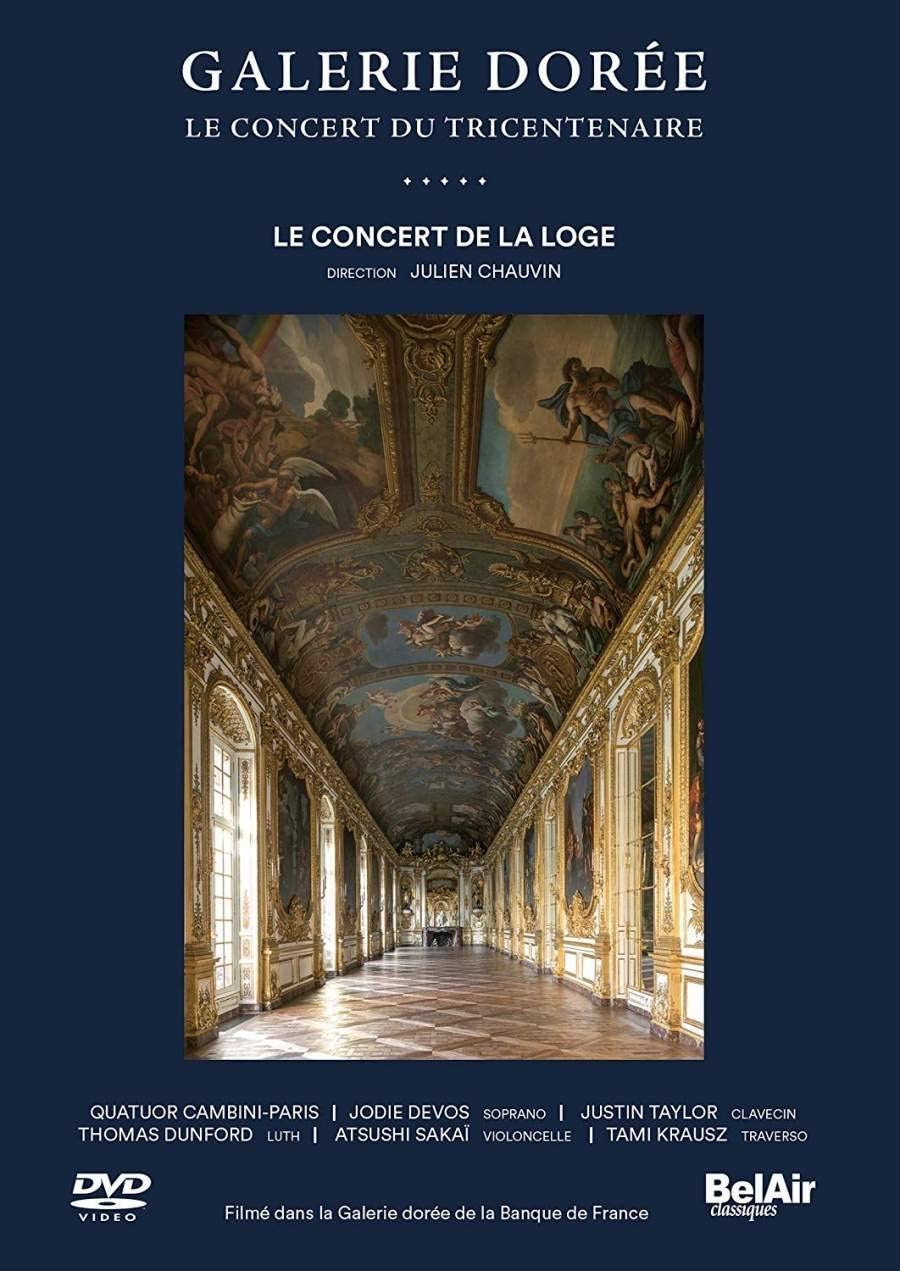
Le concert du Tricentenaire
Le Concert de la Loge, Julien Chauvin
+ Quatuor Cambini-Paris, Jodie Devos, Justin Taylor, Thomas Dunforn, Atsuschi Sakaï, Tami Krausz
77:00
BelAir classiques BAC171 (DVD) BAC571 (BluRay)
Click HERE to buy this on amazon.co.uk
The Banque de France’s Galerie Dorée was constructed in the late 1630s and then refurbished and refashioned 1714-1719. This DVD marks the 300th anniversary of that undertaking. There are many splendid pictures both on the bank’s own website and online generally.
The contents of the disc are partly a film of a commemorative concert, partly an exhibition of the building’s decorative artwork and partly a tour of the building itself with musicians playing in spectacular surroundings. But, for me, the whole enterprise doesn’t quite come up to the mark on any of those counts. Filming the concert was clearly problematic as the long thin venue with the orchestra halfway down the long side offered no opportunities for decent camera positions, and as far as the building and the art are concerned the shots are not really long enough to appreciate the detail of what we are being shown. Yes, the accompanying book is very informative and lavishly illustrated but you can’t look at that and the screen, and if you pause the picture for study you also pause the music. In addition, the book doesn’t deal with the music in the order in which it is played but the order in which we encounter the art in the building. I also found the camera work too fiddly (and not always well aimed) and the editing not particularly skilful, and there were times when imperfect coordination of sound and vision made me think I might not be hearing the performance I was seeing.
As noted above, the main gallery where the concert took place is long and thin and the orchestral items are filmed here mostly with the audience present though sometimes without. This latter option was a mistake as the rows of empty red chairs in the background look pretty awful. Surely they could have been removed? There are no such visual issues with the other venues which, with more space and fewer performers, look very much better.
The music itself is inspired by the art, which is a reasonable enough idea, though it does mean we get ‘movements from’ rather than complete works. The repertoire is enterprising though: when did you last hear a movement from an early Haydn symphony or a string quartet movement by Félicien David (terrific viola playing in this)? All the playing has much gusto and the live audience clearly loved what they got. But class will out, and, for me, in currently sunny Surrey (UK) the solo harpsichord Couperin and Rameau steal the show.
David Hansell

Stephen Farr (T. H. G. Trost organ, Stadtkirche Waltershausen)
79:02
Resonus Classics RES10259
Click HERE to buy this on amazon.co.uk
In the time of lockdown, music that echoes an underlying structure that is bedded into our subconscious seems somehow more necessary. The philosophical and mathematical sides of Bach’s creative genius provide patterns of order and stability that give confidence to those who feel all at sea in the present uncertainties, so a new recording of Bach’s Orgelbüchlein starts with an advantage. In the Orgelbüchlein, Bach uses the framework of the Lutheran liturgical year to order a number of exercises on the myriad different ways in which to prelude the Lutheran chorales appropriate to the seasons of the year and major themes of Lutheran piety, and listening to all 46 tracks of Stephen Farr’s CD in just under 80 minutes provides a patterned experience that has its own satisfying internal logic, though the surviving numbers in the Orgelbüchlein represent only a fraction of the 164 pieces that were planned, as the many blank pages in the autograph attest.
What sort of pedagogical exercise is this? The preludes range from the relatively simply structured if elaborate pieces where the chorale melody is clearly heard at the top of a polyphonic texture like BWV 601 Herr Christ, der ein’ge Gottes-Sohn or 625 Christ lag in Todesbanden through the more elaborately decorated works such as BWV 622 O Mensch bewein or BWV 634 Liebster Jesus, wir sind hier to the even more complex or inventive BWV 608 In dulci jubilo or BWV 629 Erschienen ist der herrliche Tag, where the chorale – heard in canon at a bar’s distance – is given a kind of acoustic echo. Then there are those that use an ostinato phrase like BWV 615 In dir ist Freude or BWV 637 Durch Adams Fall to punch out the key theme or the more complex canonical structures of BWV 611 Christum wir sollen loben schon with the chorale in the alto and free-running imitation in the other parts or BWV 624 Hilf Gott, dass mir’s gelinge with its additional obbligato line in running triplets from beginning to end under the chorale in canon at the fifth. Some have reminiscences of Pachelbel’s chorale variations like BWV 632 Herr Jesu Christ, dich zu uns wend’, or Bach’s own trio sonatas like BWV 639 Ich ruf’ zu dir. All this gives an infinite variety as well as stretching the organist’s technical capabilities.
As always, Stephen Farr’s playing is faultless; but his choice of instrument here doesn’t make it easy for him. Instead of a more compact and responsive instrument such as was available to Bach in Weimar during the time when the bulk of the Orgelbüchlein was written, he chose the large (and somewhat unwieldy) organ by Trost that dates in the main between 1724 and 1730 in the more developed Thuringian style where many ranks clearly have to be coaxed into speech.
This famous instrument, conserved in the 1990s and sampled for Hauptwerk, gives him almost unlimited tonal and aural possibilities, and the large number of 8’ ranks in every department can be used either singly or in combination to give subtle shades. And the slow-speaking Pedal can cause problems on certain notes, and he quite often needs to couple it to the Brustwerk to aid its clarity. The booklet gives the specification and detailed registration for each piece, which is splendid and there is additional information available on www.organartmedia.com/en/heinrich-gottfried-trost. In his notes, he admits that the organ is hard to play, and makes a good case for his performance choices. The booklet is a model of clarity and information and sets Farr’s realisations within the performance tradition well presented in Nigel Simeone’s essay.
As always with Stephen Farr’s recordings, this is model of how to do it, and those who have his Clavier-Übung III on the Trinity Cambridge Metzler or the Chorale Partitas on the Sussex house organ by Aubertin will need no further encouragement to get this outstanding CD.
David Stancliffe